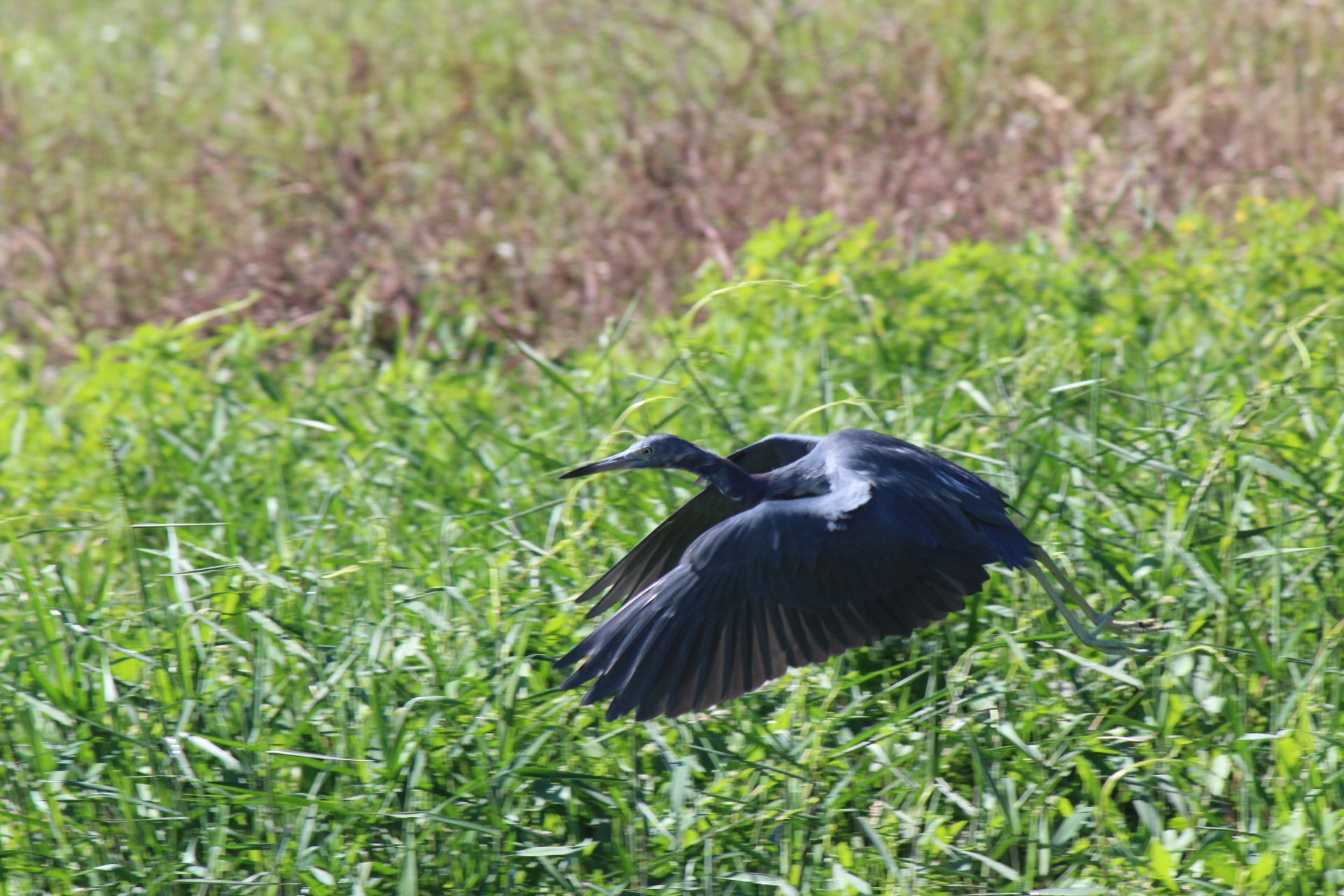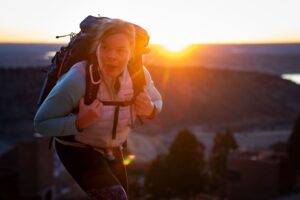
What’s your shriek number?
On a scale where 1 equals bird watching and 10 is floating on a 150 MPH column of air or looking into the eyes of a large, hungry reptile, what does it take to get a yelp out of you?
My own adventure level is a little hard to pin down. At an amusement park, you can spin me or literally throw me for a loop all day and I love it, but you’ll never catch me on a plunging roller coaster. I can rappel, but I won’t bungee jump. I once traveled alone for three months in Asia, but go to pieces at the idea of giving a toast at a wedding. I like snakes, but spiders … you get the idea. As with most people, my personal boundaries separating fun and scary are arbitrarily drawn and a little hard to map.
The beautiful thing about Orlando, I discover on a weeklong Florida walkabout, is that whatever your adrenaline threshold, Orlando can provide it for you. And not just at the theme parks, either. Those places have fright down to a science, and are obviously a must-see if you’re in these parts. But there are lots of more organic thrills to be found in and around the city, in places that visitors don’t often get to. Several times during my stay, I experience a double rush of excitement: The first from experiencing something stimulating, and the second from the feeling that I am acting like an explorer, not a tourist.

Blue Spring State Park
Naïve Californian that I am, I arrive picturing Central Florida as essentially a cluster of theme parks surrounded by a giant mud puddle. This is not even close to the truth, as I discover on a day trip to Blue Spring State Park (2100 W French Avenue, Orange City, 386-775-3663, FloridaStateParks.org/BlueSpring), a little less than an hour north of Orlando. If the park oozes anything, it’s languid Southern charm. The first thing I see upon arrival is the three-story Thursby House, built in 1872 and now surrounded by stately oaks draped in Spanish moss. The house is open to the public, but I haven’t come to explore history; I’ve come to have a little fun on the two major bodies of water found in the park.
The namesake Blue Spring is a perfect example of an attraction that can accommodate both scaredy-cats and adrenaline junkies. Reached by a short boardwalk hike during which it’s not uncommon to see woodpeckers, armadillos, or peregrine falcons, the spring is crystal-clear and runs at 72 degrees all year round. For most of its length through the park, the spring runs shallow and lazy and is ideal for tubing. I spend part of an afternoon drifting on a rented tube from one dock to another; my only concern whether to portage my tube back to the starting point after each run or swim with it against the faint current.
This alone is an idyllic way to spend a day, but there’s more to Blue Spring than meets the eye—unless you’re using snorkel gear, also available to rent at the park. With a mask, the clear water shows itself to be full of fish, including the alarming but completely harmless longnose gar, four feet of plates and scales resembling a dinosaur more than something you might try to catch with a worm.
If you’re brave enough for Scuba gear (I, candidly, am not) a true underwater world opens up to you. At the source, the otherwise shallow spring plunges to a depth of 120 feet. Cathedral-like caverns below 60 feet can be explored by experienced cave-divers—the currents are so strong that this dive is not recommended for beginners.
If you are more comfortable in shallow water, you’re in good company, because so are the park’s star residents: hundreds of Florida Manatees. So many of the 1,200-pound marine mammals, also known as sea cows, winter in the refuge that the spring is closed to swimmers and divers from mid-November through mid-March. During those months, you can still stroll a raised walkway along the water’s edge, which gives you a great view of the cavorting creatures. When the spring is open, it’s not unheard of to find yourself face-to-snout with one while swimming. In this case, calmly back away. They are friendly, gentle animals with teeth made for grinding plants, not toes, so they really can’t hurt you. The $500 fine for touching one, though—that will sting.
There are no manatees visible the day I visit in October, but rangers tell me that a sighting is possible any day of the year because there are always a few stragglers hanging around during the off season. The thought that I might yet see one of the swamp behemoths buoys me through a three-hour trip with St. Johns River Cruises (2100 W French Ave, Orange City, 407-330-1612, http://sjrivercruises.com) on the park’s other body of water, the St. Johns River.
Blue Spring feeds into the St. Johns, but the two waterways are fairly different. Where Blue Spring is clear, brackish, and sulfurous, the St. Johns is murky but technically potable. The spring is tree-shrouded, while the river is wider and feels more open. The St. Johns River also has the distinction of being one of the few rivers in the world that flows north.

Oh, and the river has alligators.
I never do see a manatee, but it’s hard to be disappointed when the gods of wildlife sightings swap one massive river creature for another. We see a range of alligators, from 18-inch nippers submerged up to their eyeballs (we need Captain Rebecca’s help to spot them), to six- and seven-footers lounging in full view on the shore. These hardly look real to my Yankee eye, so huge, so still and so…accessible. Surely, no one would let a boat full of tourists get within 20 feet of a real creature that could remove a limb with one snap of the jaws?
Yes, they would, I discover toward the end of the voyage. One moment we are admiring a serene 10-footer on a nearby shore, still as stone, and in the next moment, it is launching itself in an explosive frenzy of teeth and splashing toward something in the water near our boat. Safe in the vessel, we are never in danger, but just for a moment I experience a primal jolt, a hint of what it’s like to be prey, which is nearly impossible for a man-made attraction to duplicate.
Three Lakes Wildlife Management Area
More subtle, but for me, just as rewarding, are the adventures I have exploring the Three Lakes Wildlife Management Area (Kenansvill, 352-732-1225, http://myfwc.com/viewing/recreation/wmas/lead/three-lakes/), a 62,000-acre expanse of freshwater and prairie an hour or so south of Orlando. I visit on a weekday that is threatening rain, and my spouse, Pipi, and I feel like we’ve got the place to ourselves.
And that’s true as far as people go, but the birds, that’s another story. Three Lakes is a paradise for birders in general, and for lazy, weather-averse birders in particular. In about an hour’s time, on a driving loop covering less than 20 miles, Pipi and I spot three species we’ve never seen before—without getting out of the car. These aren’t just any little flitters, either. Bald eagles perch on snags like they were posing for us, and magnificent 4-foot-tall sandhill cranes strut through fields not 100 feet from the road.
Birds are not the only animals in the area, just the most obvious. Sightings of deer, tortoise, and wild hog reward the patient—and the armed. Three Lakes, which is a managed, rather than a protected area, is open to hunters and anglers. In fact, it’s open to just about everyone, including bikers, horseback riders, boaters, campers, and hikers, who get nearly 30 miles of trail. I’m tempted to say that everyone gets along well, but based on my experience in the vast and sparsely attended park, it’s probably more accurate to say that visitors of all stripes just find it pretty easy to stay out of each others’ way.
iFLY
In Orlando, there is adventure to be had indoors, as well. One morning I get up the courage to try indoor skydiving at iFLY Orlando (6805 Visitors Circle, 800-759-3861, http://orlando.iflyworld.com). Though I have a visceral fear of free-fall, I allow for the possibility that floating on air doesn’t feel the same as plummeting, and so I put on a helmet and goggles (provided) and decide to go for it.
I’m hardly the only nervous person they’ve seen at iFLY, and I note that the introductory rituals are designed to inform and reassure us. A wiry, athletic instructor named Chris, the kind of guy who can rock a jumpsuit, tries to tell us what to expect. We won’t be jumping off of anything. Instead, we’ll be leaning into a forceful column of air that creates a vertical wind tunnel strong enough to suspend a person weighing up to 250 pounds. The arch of your back, tilt of your head, and bend and separation of your limbs are all important, and Chris teaches us hand signals that he will use to remind us of how to place our bodies—he’ll be in the chamber with us, but it will be noisy, so verbal commands are out. I notice that Chris always refers to what we will be doing as “flying,” not “skydiving” or “plunging head-first to the floor,” so I’m encouraged.

When the time comes, we are ushered to the base of the flying chamber, approximately 30 feet tall, with clear glass walls and a trampoline for a floor. I’m the first one in our group to go, and I’m acutely aware of all the eyes on me. I stand in the chamber door as I’ve been told, and lean in. Instantly I am hovering a few feet off the floor. It’s not as hard to breathe as I thought it might be, and it’s also not as scary as I feared—it’s true; there is no sensation of falling.
But it isn’t as effortless as I thought it might be, either. Just before flying, we’d seen Chris and his flight instructor buddies give us a demo, and they’d zoomed, twirled, and somersaulted exuberantly, making it look easy.
It’s not.
Chris, when he zips across the chamber and does flips in mid-air, looks like Spiderman. I, on the other hand, look more like a dead bug. I hover momentarily, then I make the mistake of tucking my head, enthralled by the weird sight of my own feet not touching anything. I rapidly ascend toward the ceiling and am pinned there like an insect specimen. Chris floats up like a butterfly to meet me and somehow, through a combination of hand-signal communication and brute force (the jumpsuits students are given have handles), I am wrestled back down to the ground. Flights typically last 60 seconds at iFLY, but with so many people watching me flail awkwardly, it feels longer and in spite of the exhilaration, I am a little relieved when it’s over.
The rest of my group flies, and I am secretly a tiny bit glad that most of them struggle, too. We all do much better on our second turns, though. My second time through, having learned from my mistakes and from watching others, I am much better at maintaining my altitude, and I begin to enjoy myself. I rise and descend in a controlled way, and toward the end of the flight, with Chris’ help, I turn a slow, stately victory lap around the chamber. I won’t say it was graceful, but I can say it was fun and exhilarating, and for a normally desk-bound woman with a long litany of fears (heights, falling, and public humiliation included), I think that qualifies as a pretty successful adventure.
To contract an original article, purchase reprints or become a media partner, contact ">editor [@] girlsthatroam [.] com.







